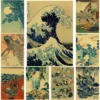This Content Is Only For Subscribers
Standing majestically in Milan, Italy, a colossal bronze horse rises 24 feet into the sky, embodying a Renaissance dream that took over five centuries to realize. This impressive sculpture, known as “Leonardo’s Horse” or “Il Cavallo,” tells a captivating story of artistic genius, war, destruction, rediscovery, and ultimately, triumph. Discover how Leonardo da Vinci’s unfinished masterpiece finally came to life through the vision of a retired American pilot and a talented sculptor.
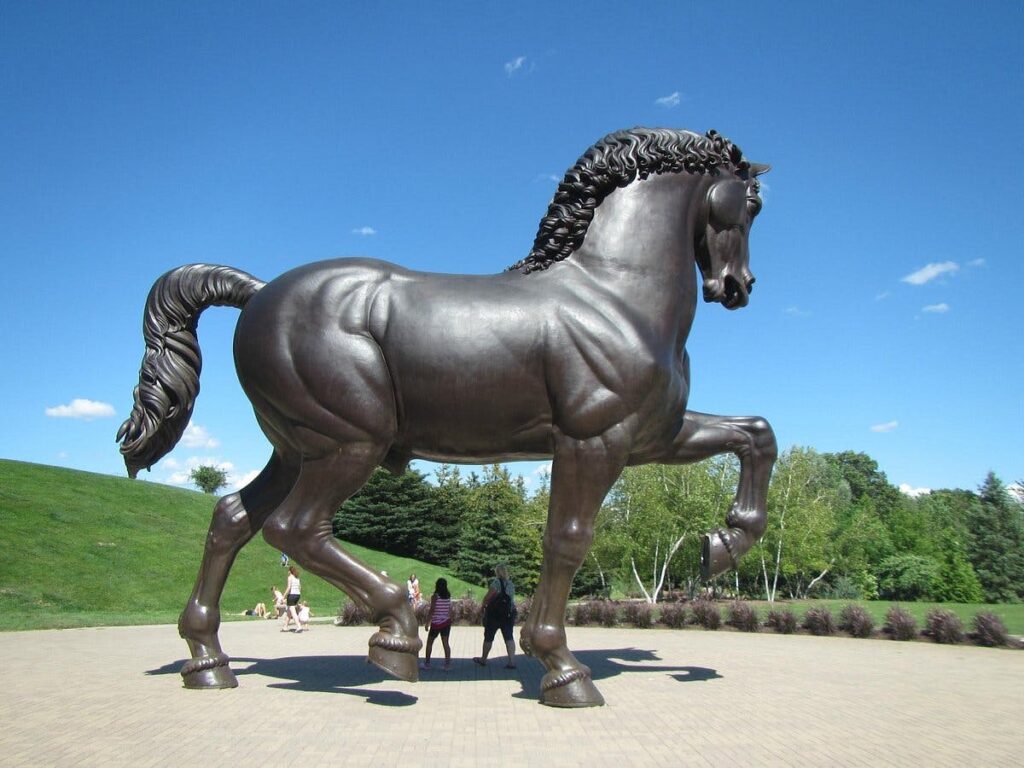
The Birth of a Renaissance Vision
In the late 15th century, Milan’s powerful ruler Ludovico Sforza commissioned Leonardo da Vinci to create what was intended to be the world’s largest equestrian statue. This monumental work would honor Ludovico’s father, Francesco Sforza, the founder of the Sforza dynasty.
For Leonardo, already renowned for his artistic and engineering prowess, this commission represented the opportunity to:
- Create his largest three-dimensional work
- Demonstrate his unrivaled understanding of equine anatomy
- Solve complex engineering challenges
- Produce a monument that would immortalize both the Sforza family and his own genius
Between 1482 and 1499, Leonardo dedicated considerable time to this ambitious project, creating numerous detailed sketches and studies that showcase his remarkable understanding of horses.

Leonardo’s Meticulous Preparation
Leonardo approached the massive equestrian statue with the scientific rigor and artistic brilliance that characterized all his work. His preparation included:
- Anatomical studies: Leonardo dissected horses to understand their muscular structure and movement
- Mathematical calculations: He developed precise measurements and proportions for the colossal statue
- Engineering innovations: Leonardo designed special techniques to cast such a massive bronze sculpture
- Artistic sketches: He produced dozens of drawings exploring different poses and positions
By 1493, Leonardo had completed a 24-foot clay model of the horse, which astonished contemporaries with its size and beauty. This full-scale clay prototype would serve as the mold for the final bronze casting.

Tragedy Strikes: The Destruction of Leonardo’s Dream
As Leonardo prepared for the final bronze casting, historical events intervened tragically. In 1494, France’s King Charles VIII invaded Italy, beginning what would become decades of warfare on the Italian peninsula.
Facing military threat, Ludovico Sforza made a fateful decision:
- The 80 tons of bronze allocated for Leonardo’s horse were diverted to create cannons
- Military defense took priority over artistic creation
- The project was indefinitely postponed
The situation worsened in 1499 when French troops captured Milan. During their occupation:
- French archers reportedly used Leonardo’s clay model for target practice
- The magnificent clay horse was destroyed completely
- Leonardo’s work of nearly two decades was reduced to rubble
This devastating loss reportedly haunted Leonardo for the remainder of his life. According to historical accounts, the horse project’s failure was even used to mock him years later during an encounter with Michelangelo in Florence.
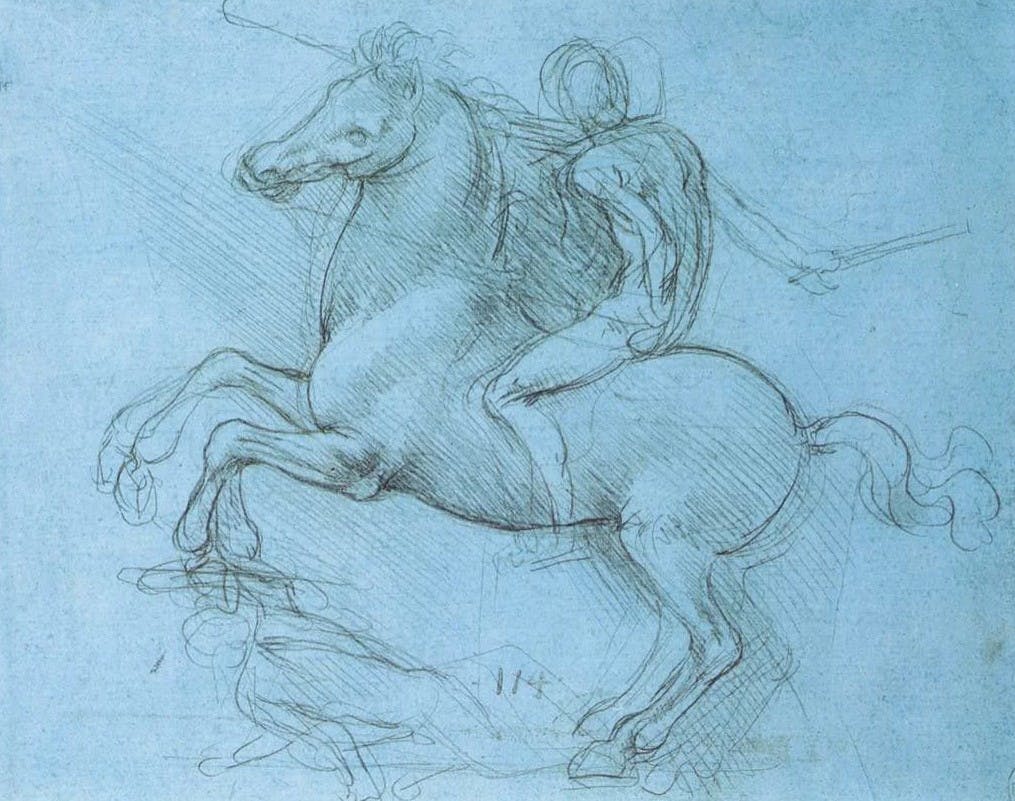
The Rediscovery: Leonardo’s Lost Plans
For nearly five centuries, Leonardo’s horse remained just a footnote in art history—a brilliantly conceived but never realized masterpiece. Then came a series of discoveries that would breathe new life into the ancient project:
- In 1965, scholars discovered previously unknown notebooks by Leonardo, the Codex Madrid II
- These notebooks contained detailed plans and sketches for the horse monument
- The 1977 National Geographic magazine featured an article about Leonardo’s unfinished horse
This National Geographic piece caught the attention of Charles C. Dent, a retired airline pilot, art enthusiast, and amateur sculptor from Allentown, Pennsylvania. Moved by Leonardo’s unfulfilled dream, Dent made an extraordinary decision: he would complete what the Renaissance master had begun.
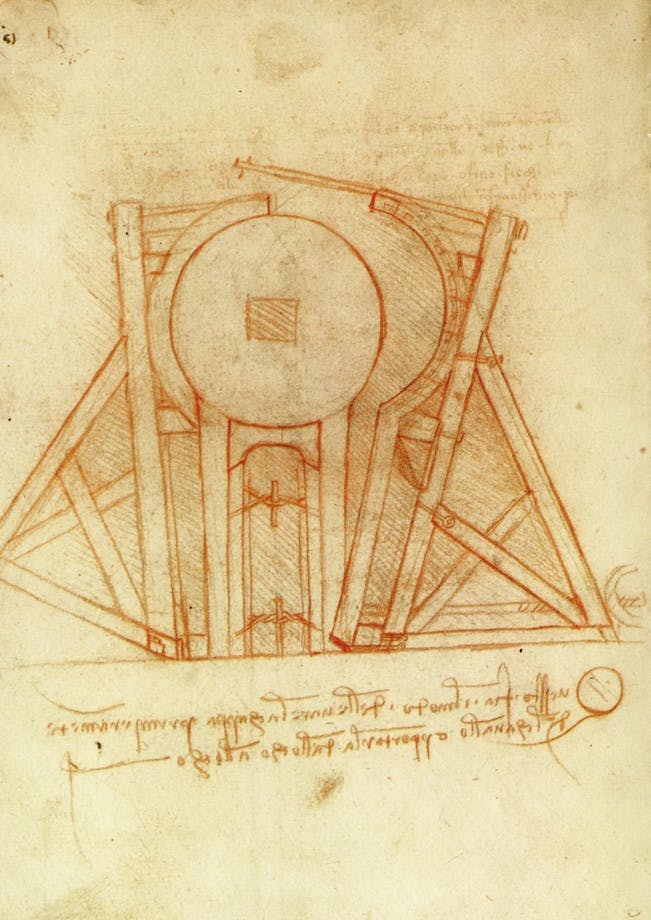
The Modern Revival: From Pennsylvania to Milan
In 1982, Dent established Leonardo da Vinci’s Horse, Inc. (LDVHI), a nonprofit organization dedicated to fulfilling Leonardo’s vision. The project faced numerous challenges:
- Historical accuracy: Researchers had to interpret Leonardo’s drawings and notes
- Technical challenges: Creating such a massive bronze sculpture required specialized expertise
- Funding: Millions of dollars needed to be raised for the project
- International cooperation: Coordination between American creators and Italian authorities
Tragically, Charles Dent passed away in 1994, never seeing his dream realized. But the LDVHI continued his mission, bringing on board skilled sculptor Nina Akamu in 1997 to lead the artistic aspects of the project.
The Sculptor’s Challenge: Honoring Leonardo’s Vision
Nina Akamu, an accomplished sculptor with experience in equestrian art, faced the monumental task of interpreting Leonardo’s plans while creating a viable modern sculpture. Her work involved:
- Studying Leonardo’s surviving sketches and notes
- Researching Renaissance casting techniques
- Creating multiple smaller models to test proportions
- Developing a design that honored Leonardo’s intent while incorporating necessary modern engineering
While not an exact replica of Leonardo’s original design (which no one knows with certainty), Akamu’s work represents a faithful homage to his artistic vision, incorporating elements clearly visible in his surviving drawings.

The Triumphant Return: Leonardo’s Horse Comes Home
After years of work, the project reached its culmination:
- On September 10, 1999—exactly 500 years after the destruction of the original clay model—Leonardo’s Horse was unveiled in Milan
- The magnificent bronze sculpture stands 24 feet tall and weighs approximately 15 tons
- It was installed outside the San Siro Hippodrome in Milan, not far from where Leonardo had worked on the original
- The timing created a perfect historical symmetry: what war had destroyed in 1499, perseverance had restored in 1999
The sculpture immediately became a cultural landmark, drawing visitors from around the world who come to marvel at this Renaissance dream finally brought to reality.
Multiple Horses: Leonardo’s Legacy Spreads
The story didn’t end with the Milan installation. Additional full-sized casts of Leonardo’s Horse now exist in:
- Grand Rapids, Michigan: A full-sized replica stands at the Frederik Meijer Gardens & Sculpture Park
- Allentown, Pennsylvania: A bronze replica honors Charles Dent in his hometown at the Baum School of Art
- Vinci, Italy: Leonardo’s birthplace received a smaller version of the horse
These multiple installations ensure that Leonardo’s artistic vision reaches audiences worldwide, five centuries after he first conceived it.
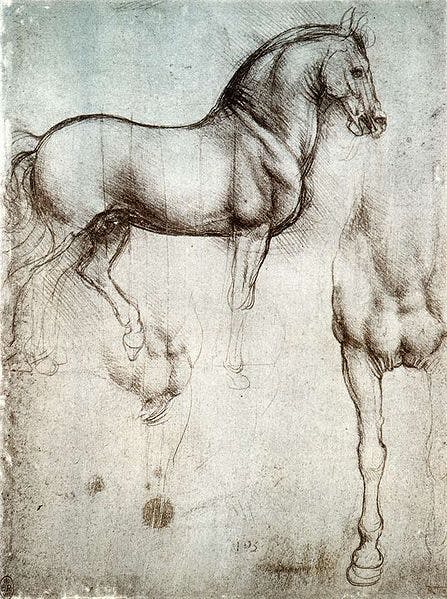
The Significance: Why Leonardo’s Horse Matters
Beyond its impressive size and beauty, Leonardo’s Horse represents something profound about art, history, and human determination:
- Artistic perseverance: The project demonstrates how artistic visions can transcend time
- Historical redemption: It rectifies a historical tragedy and cultural loss
- Cross-cultural collaboration: American donors and artists joined with Italian authorities to honor a Renaissance genius
- Engineering achievement: The modern creation overcame the same technical challenges that Leonardo faced
- Educational value: The horse serves as a tangible connection to Renaissance art and history
The sculpture stands as a bridge between centuries, connecting modern viewers with Renaissance ambitions and demonstrating how contemporary technology can help realize historical visions.
Visiting Leonardo’s Horse Today
For travelers interested in experiencing this remarkable sculpture firsthand:
- Milan location: The horse stands at the San Siro Hippodrome (Ippodromo del Galoppo)
- Accessibility: The site is open to the public and accessible via Milan’s public transportation
- Nearby attractions: The location can be combined with visits to other Leonardo sites in Milan, including “The Last Supper”
- Photography: The sculpture’s impressive scale makes it a popular photographic subject
Art historians, Renaissance enthusiasts, and casual tourists alike find the horse a moving testament to artistic vision and historical persistence.
Leonardo’s Other Equestrian Works
While the Sforza horse was Leonardo’s most ambitious equestrian project, it wasn’t his only work featuring horses:
- His painting “Adoration of the Magi” (1481) includes several masterfully rendered horses
- Leonardo also began work on an equestrian monument for Gian Giacomo Trivulzio, another military leader, which was also never completed
- His notebooks contain numerous studies of horses in various positions and movements
These works collectively demonstrate Leonardo’s fascination with horses and his unparalleled ability to capture their form and movement.
Conclusion: A Dream Fulfilled Across Centuries
The story of Leonardo’s Horse represents one of art history’s most remarkable acts of completion and dedication. From a Renaissance workshop to modern-day Milan, the journey of this monumental sculpture spans centuries, continents, and countless human efforts.
Today, as visitors stand before the towering bronze horse, they witness more than just a beautiful sculpture—they experience the culmination of a dream that survived war, destruction, and the passage of five centuries. Leonardo’s Horse stands as proof that with vision, determination, and respect for genius, even the most ambitious artistic dreams can eventually become reality.
“The sculpture which I created … pays homage to the creative genius of Leonardo. It is not intended to be a recreation of his sculpture. However, it has been significantly influenced by certain works of art and writings from that period, and specifically Leonardo’s notebooks and accompanying drawings with great emphasis on his involvement with the Sforza monument.” ~ Nina Akamu

 Additional Fun Facts
Additional Fun Facts
20 Years
This is how long Leonardo Da Vinci spent thinking and working on the bronze statue of the horse. He spent years studying horse anatomy, and created elaborate plans for castubg the statue.
70 Tons
of Bronze was needed for the single casting process that Leonardo had in mind. This single casting was one of the most audacious artistic projects of it’s time.
$450 Million
That is the price the Saudi prince Badr bin Abdullah Al Saud paid for Leonardo Da Vinci’s painting titled “Salvator Mundi“. Although some experts dispute whether this painting is indeed a Da Vinci original.




